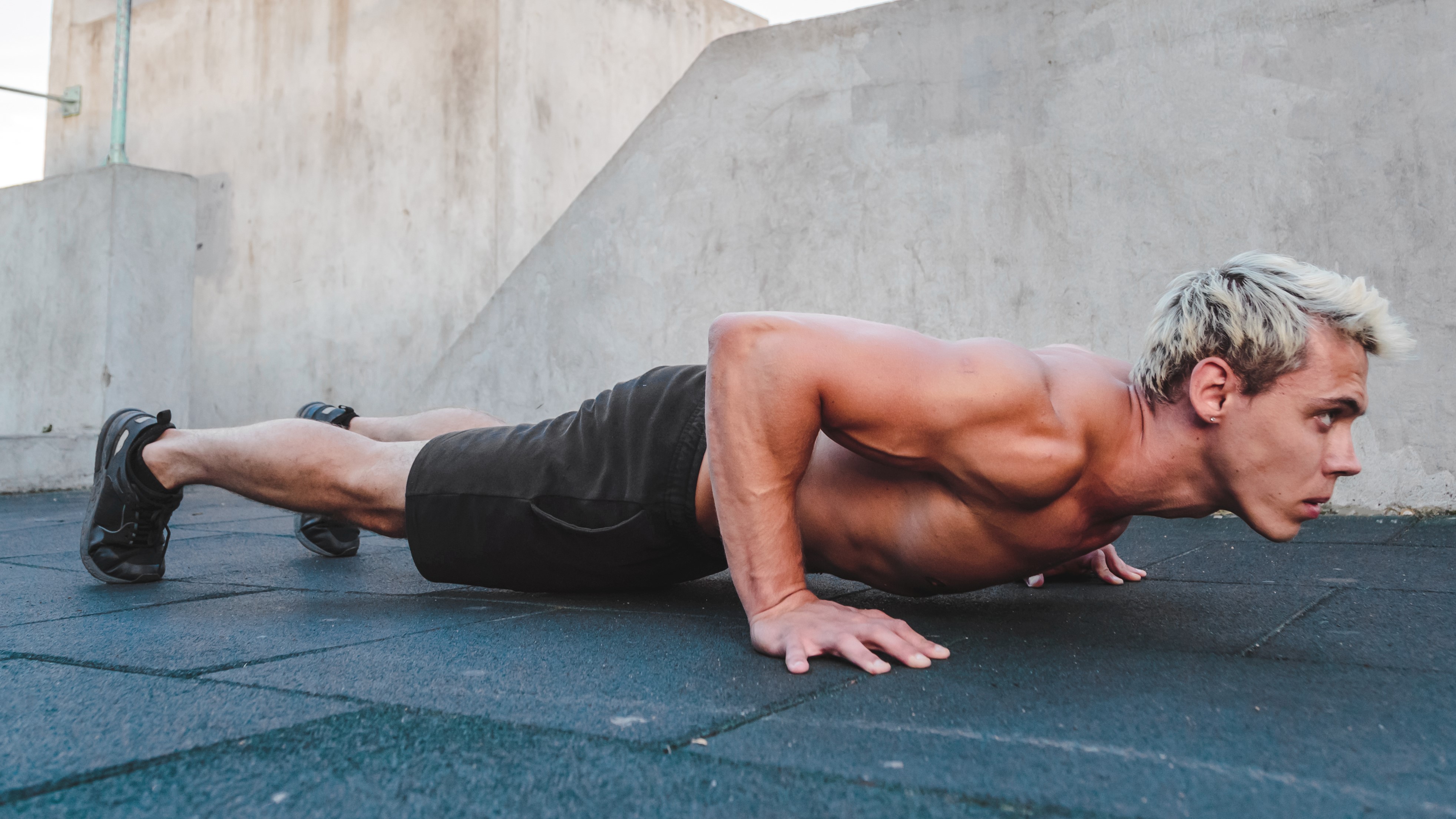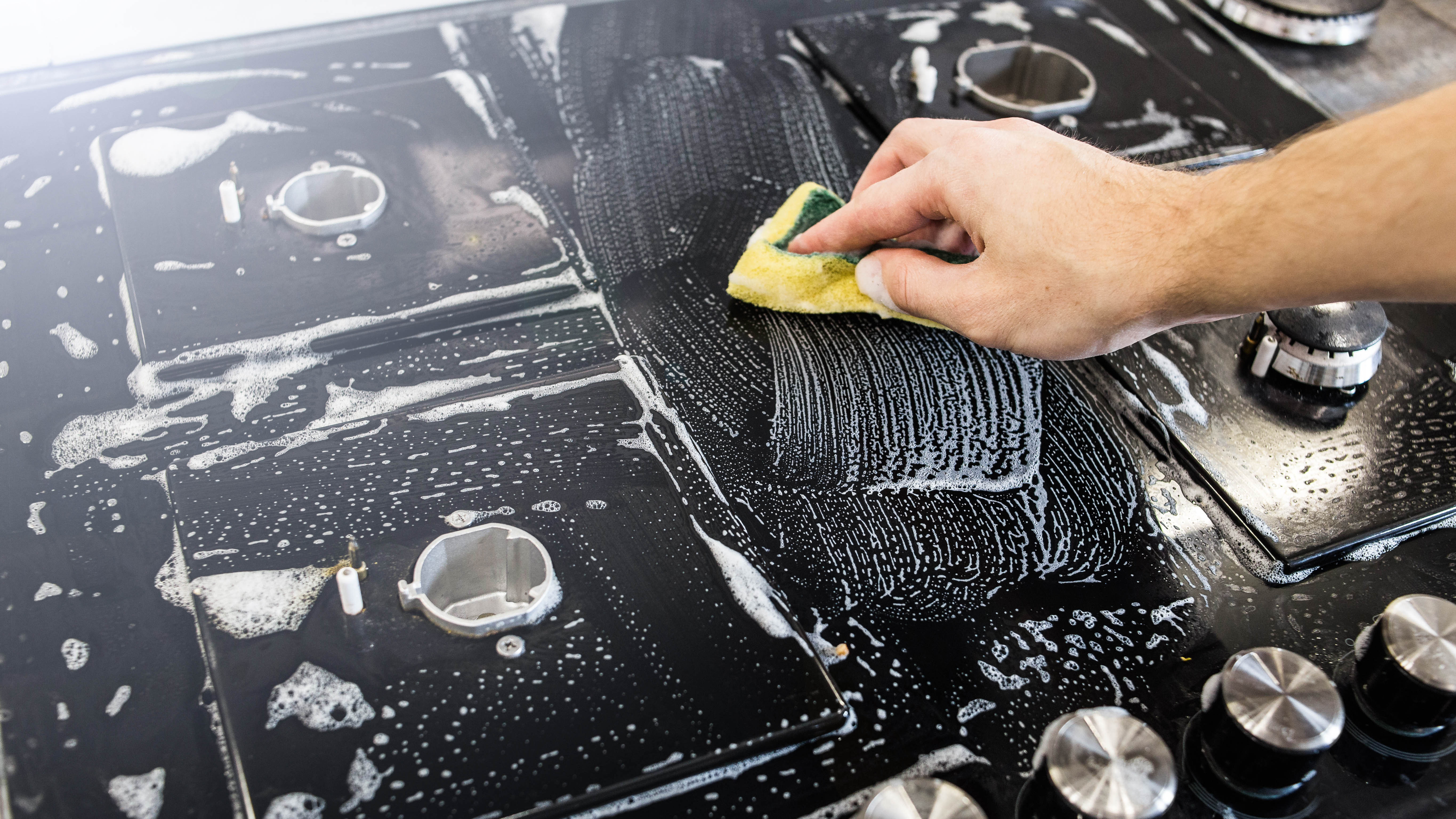
If burpees aren’t bad enough when crawling toward a workout’s finish line, how about reverse burpees instead? Here’s what happened when I added them to my routine every day for a week.
Burpees are an awesome bodyweight exercise for personal trainers like myself, or anyone for that matter, to ramp up the intensity of any workout. You can use them as a finisher to torch muscles, go out in a blaze of sweat, or add them to any circuit or HIIT class to test endurance.
If you ever get bored of burpees, give these reverse burpees a try. Read on to find out what happened when I committed to them for seven days.
Reverse burpees: Benefits
You only have to hear the word “burpee” to know you’re about to get tortured. Reverse burpees combine a squat, spinal roll and jump to hit reverse on the traditional burpee. If you haven’t learned how to do a burpee yet, we recommend brushing up on your form and the muscles working.
If the push-up part of a burpee prevents you from doing them, the reverse burpee allows you to roll onto your back and use your core muscles to stand back up, building lower body strength, core stability and power. Spinal rocks help mobilize your spine and gently massage your back while helping to strengthen your core muscles. Rocking on your back can also improve balance and coordination and activate the back-body, especially as you roll forward to stand again.
How to do a reverse burpee
Here’s how to do the challenging bodyweight exercise:
- Stand with your feet hip-width apart and squeeze your stomach and glutes to properly engage your core muscles
- Perform a squat by bending your knees as if sitting in a chair, keeping the weight distributed across both feet
- Lower your bum to the floor, then roll onto your back while tucking your knees toward your chest. If you can, extend your legs above your head
- Roll forward onto your bum and plant your heels down, then drive through your feet and legs to return to a squat
- Extend your legs and jump upward, reaching both arms overhead.
Use your hands for extra support, to begin with, by placing them close to your hips. Try to take your hands away as you progress.
Sign up to get the BEST of Tom's Guide direct to your inbox.
Get instant access to breaking news, the hottest reviews, great deals and helpful tips.
I did 50 reverse burpees every day for a week — here’s what happened
It’s harder than it looks
The reverse burpee uses an entirely different technique than standard burpees and requires core strength and explosive power to lift yourself off the floor, so there’s a new set of skills to learn.
Ensuring you have good squat form should be your first port of call when trying to reverse burpees, using a tripod foot position, distributing your weight between your little and big toes and your heels. Even with these skills locked in place, I find the bodyweight exercise way harder than anticipated.
You only have to hear the word “burpee” to know you’re about to get tortured.
I find myself rounding my spine while attempting to stand up and not engaging my core enough, which puts my body in a hunched position. Your back should be neutral as you squat, then slightly round only while you rock and roll. You’ll need to straighten your spine again as you push upward to stand.
Hands help a lot
I find reverse burpees far more accessible by placing my hands next to my hips, and the reps come easily using this scaling option. I can power out 50 reps without rest this way, but I know I’m taking a scaling option that isn’t suitable for me. Take away my hands, and it’s an entirely different story. I use both variations throughout the week, but I can’t believe how much core strength and power is required when my hands are out of the equation — I fall over an embarrassing amount.
The rock and roll is crucial
The roll helps build momentum for driving forward and upward, so wooden floors or uneven terrain are no-nos if you plan to try reverse burpees without disaster. Rolling out one of the best yoga mats for grip helps support the spine and prevent slippage while you rock and roll, helping to generate enough power to sit up, which means performing it with speed and confidence while trusting yourself to move backward.
I feel no different
Despite getting my heart rate up and testing my core power and balance, I feel no different. I probably fell over a million times, and my form improved throughout the week, but aside from that, I've come away relatively unscathed.
I expected reverse burpees to gas me from the reps alone, so I scheduled them as a finisher to my existing CrossFit workouts each day. By the end of the seven days, I’m reverting to using them as a warm-up to my workouts, helping to mobilize and massage my back, activate my core and hips, raise my heart rate and warm my muscles for exercise. I'm surprised, but I believe you probably work up more of a sweat when using them as part of a fast-paced workout instead.
You need mobility in your hips, knees and ankles
If you adopt a wider stance for squats, you might find your lower body mobility tested for this exercise, as you’ll need to lower your bum enough to the floor to sit without your heels lifting or knees turning in. It comes with practice, but I feel tight going into this exercise using a hip-width foot stance, and it takes 10 to 20 reps to warm up properly and perfect my squat form while extending my arms for counterbalance.
I did 50 reverse burpees every day for a week — here’s my verdict
During my time at Tom’s Guide, I’ve tried many fitness challenges, from picking up my weights and doing the farmer’s walk every day for a week to adopting a 3-minute frog pose exercise every day, and I’ve learned a lot of lessons along the way. So, what did I learn about reverse burpees? I didn’t get enough feedback from them to convince me I need them in my workouts going forward.
Reverse burpees help strengthen your back, quads, glutes, hip flexors, hamstrings and core muscles, working well as a cardio option for exercise routines and helping develop mobility and power. For me, I didn’t get enough intensity out of the exercise, but I did notice plenty of core engagement, and the move forces you to activate your abs to stand up, meaning there’s nowhere to hide.
More from Tom's Guide

Sam Hopes is a level 3 qualified trainer, level 2 reiki practitioner and senior fitness writer at Tom's Guide. She is also currently undertaking her Yoga For Athletes training course. Sam has written for various fitness brands and websites over the years and has experience across brands at Future such as Live Science, Fit&Well, Coach, and T3.
Having worked with fitness studios like F45 and Virgin Active, Sam now primarily teaches outdoor bootcamps, bodyweight, calisthenics and kettlebells. She also coaches mobility and stretching-focused classes several times a week and believes that true strength comes from a holistic approach to training your body.
Sam has completed two mixed doubles Hyrox competitions in London and the Netherlands and finished her first doubles attempt in 1:11.

